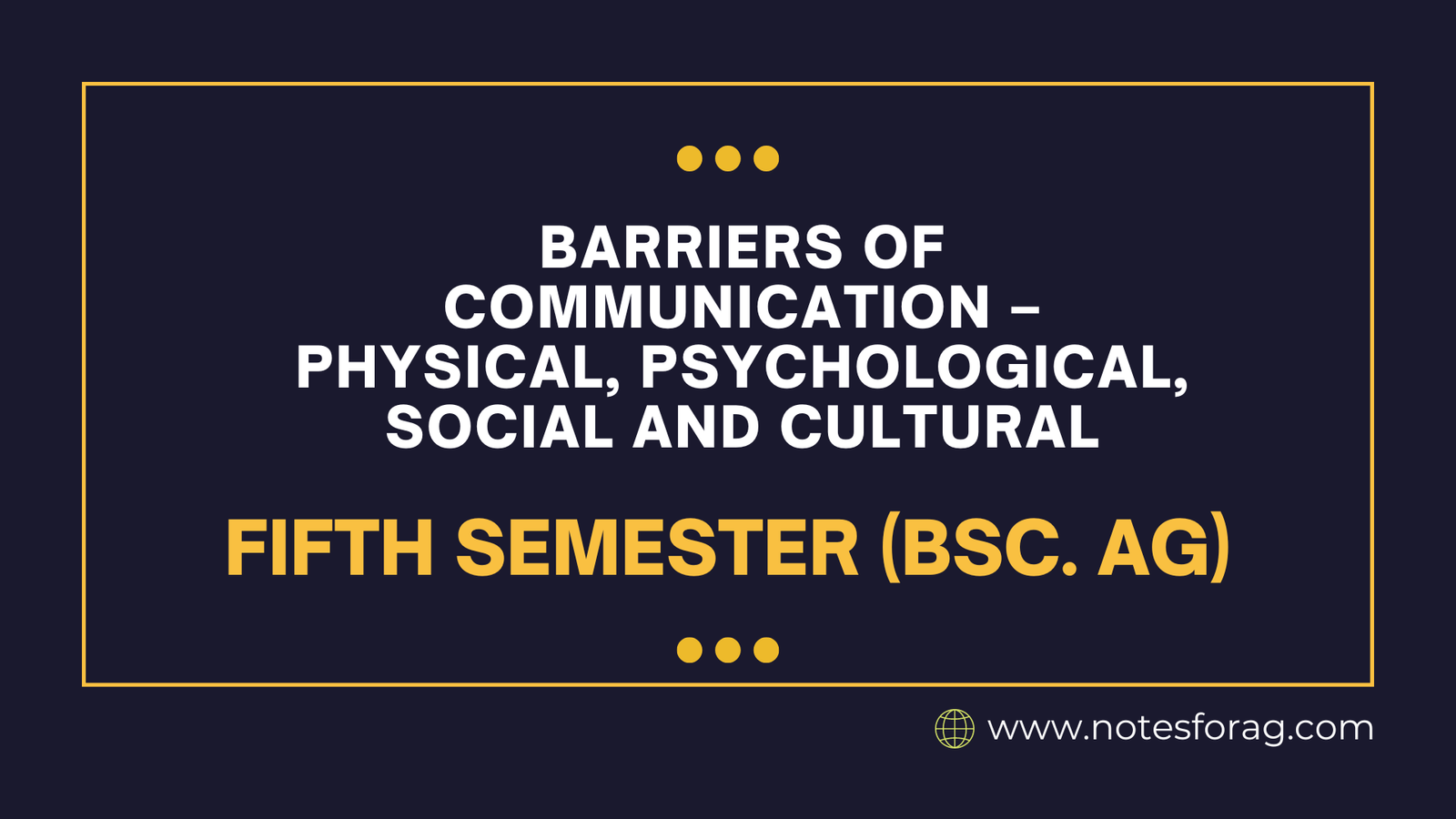Barriers of communication are factors that disrupt the effective exchange of messages and can be classified as physical, psychological, social, and cultural. Physical barriers include environmental obstacles like noise and distance, while psychological barriers stem from emotions, attitudes, and mental states such as stress or prejudice. Social barriers arise from differences in social status, group affiliations, or relationships, and cultural barriers are caused by variations in language, norms, and values between different cultural backgrounds. Understanding and addressing these barriers of communication is crucial for improving communication effectiveness.
Table of Contents
Introduction to Barriers of Communication
Barriers of Communication are obstacles that prevent messages from being effectively sent and understood between individuals or groups. These barriers can distort or obscure the intended meaning of a message, resulting in misconceptions, confusion, or inefficient communication. Physical distractions, emotional or psychological considerations, social dynamics, and cultural variations are all potential sources of barriers of communication. Recognizing and resolving these limitations is critical to improve the clarity and efficacy of communication in personal, professional, and cross-cultural encounters.
1. Physical Barriers
Physical barriers are environmental or structural obstacles that interfere with communication.
- Examples:
- Noise: Background noise (traffic, machinery, etc.) makes it difficult to hear or concentrate on the message.
- Distance: Large physical distances between the transmitter and the recipient might have an impact on message clarity and timing.
- Poor-quality equipment or technology: Faulty telephones, poor internet connections, or broken microphones can all distort the message.
- Workplace barriers: Closed office settings, physical barriers, and bad illumination can all impede open communication.
2. Psychological Barriers
Psychological barriers are mental or emotional constructs that impede successful communication.
- Examples:
- Perception and Attitude: Biases, preconceptions, and previous notions can all influence how someone interprets a message.
- Emotional States: Anxiety, tension, anger, or melancholy can impair judgment and make it harder to process or convey a message effectively.
- Fear and Mistrust: If there is fear or mistrust between the sender and recipient, communication may be hampered, resulting in misinterpretations or defensive replies.
- Prejudices: Pre-existing beliefs or opinions that distort the interpretation of the message.
3. Social Barriers
Social barriers are caused by inequalities in social characteristics such as class, background, or group connections, all of which affect communication.
- Examples:
- Status differences: In the workplace, hierarchical positions can create hurdles if lower-level employees are uncomfortable communicating with upper-level management.
- Group affiliation: People from various social groups (peer groups, professional groups) may find it challenging to communicate because their norms or expectations differ.
- Social Distance: Wealth, education, or social position differences might lead to misunderstandings or lack of empathy during communication.
4. Cultural Barriers:
Cultural barriers result from disparities in cultural origins, languages, and norms, which impede communication between people from different societies or areas.
- Examples:
- Language Differences: Not speaking the same language or dialect can cause misunderstandings or misinterpretations of the message.
- Nonverbal misinterpretation: Gestures, body language, and facial expressions that are regarded typical in one culture may not have the same meaning in another.
- Cultural norms and values: Different cultures communicate in unique ways, including levels of directness, formality, and acceptable topics of discourse.
- Ethnocentrism: The conviction that one’s own culture is superior can lead to contemptuous attitudes toward other people’s communication techniques, resulting in a barrier.
To overcome these barriers of communication, it is critical to utilize clear language, be mindful of cultural and psychological sensitivities, and create a physical setting that promotes effective communication. Active listening, empathy, and feedback can also help to bridge the gaps created by these hurdles.
Frequently Asked Questions
What are physical barriers to communication?
Physical barriers are environmental obstacles that prevent effective communication, such as noise, distance, inadequate technology, or restricted office design.
How does noise impact communication?
Noise disturbs or drowns out the message, making it difficult for the receiver to focus and understand, resulting in misinterpretation.
Related Articles

